This post may contain affiliate links. Please read our disclosure policy.
This super Omega seed butter contains a nutritional 5-seed butter combination packed with vitamins, minerals, antioxidants, and healthy omega-3s and omega-6s! A delicious omega-boosting seed spread to add to your seed and nut butter arsenal!
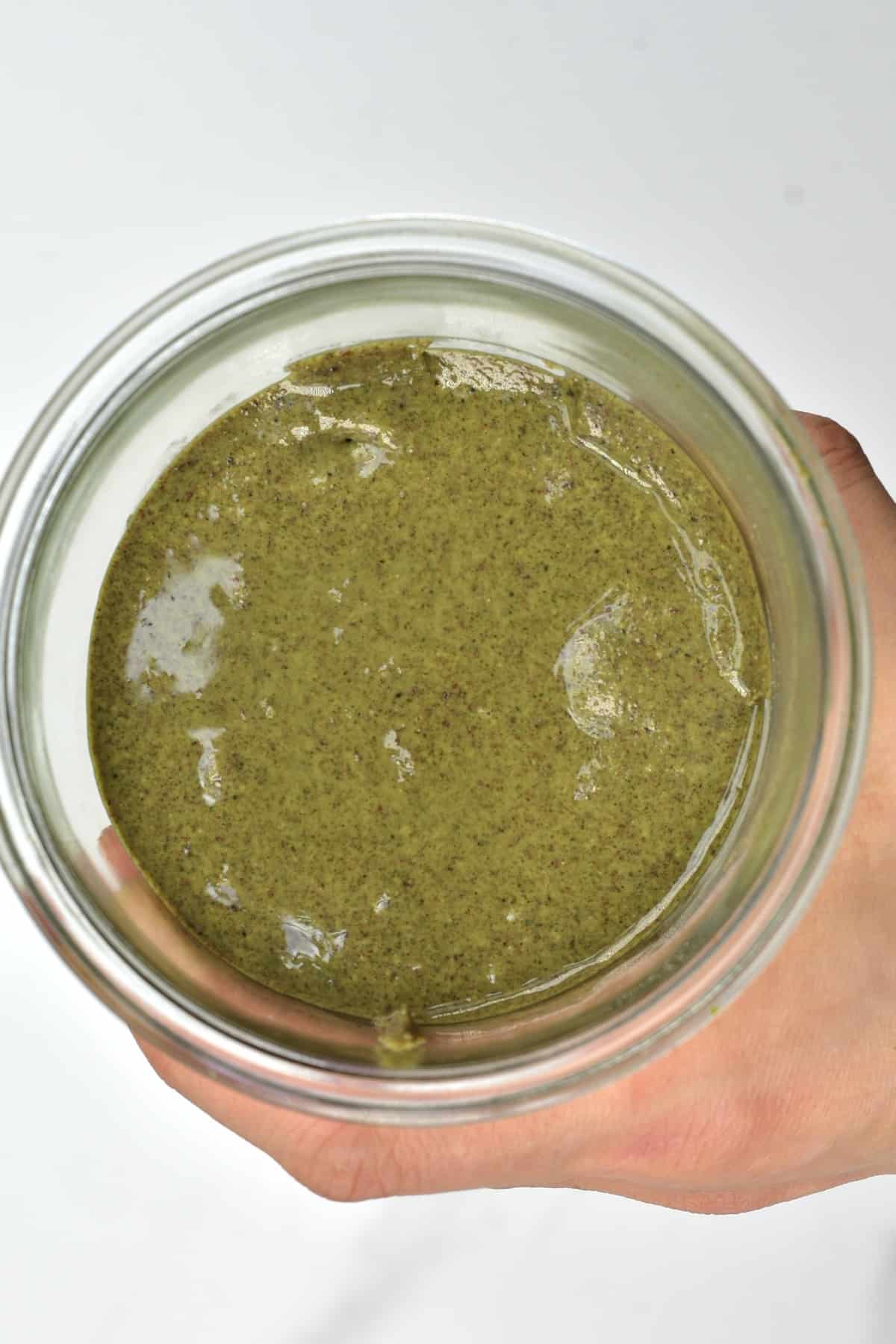
If I’m not sprinkling meals with this omega-seed blend, dipping these seeded crackers into dips, or using this 5-seed vegan protein, then you’ll find me spreading this omega seed butter over apple slices or crackers and spooning it into my morning oatmeal.
Though it wasn’t something I’d initially intended, a couple of years ago, when I went through the process of sharing all my favorite nut and seed butter recipes, I did tons of research on the health benefits of the various nuts/seeds. I came across all this information on omegas and officially fell down a rabbit hole of research.
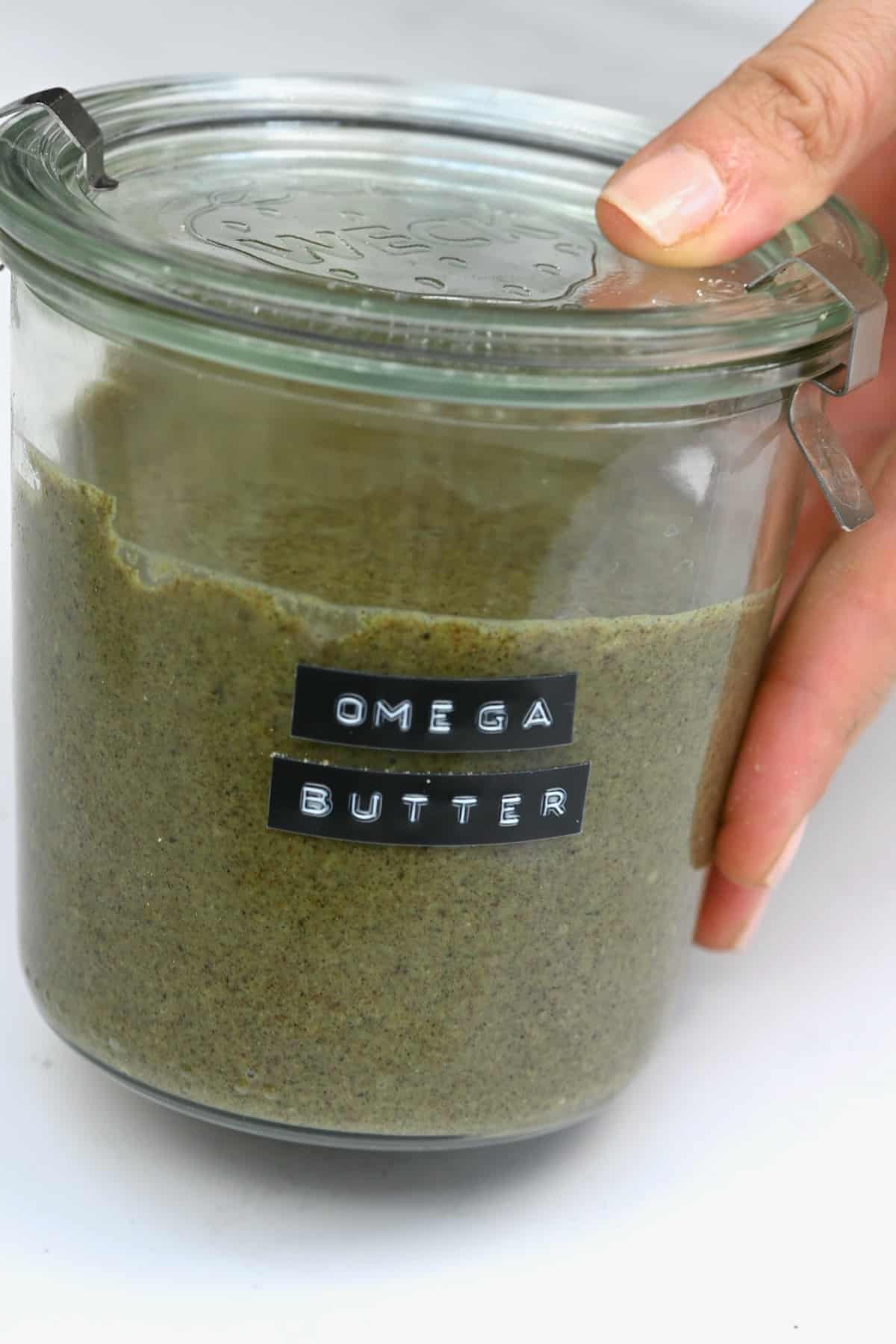
While I’ve read all sorts of research, some contradictory, they all agree that we should be eating more omega-3s! Within this post, I’ll give you a little ‘intro’ to omega fatty acids my simple recipe for this mixed seed butter.
Want to save this recipe?
What are the omega fatty acids?
There are three omega fatty acids: omega-3, omega-6, and omega-9. While they all have various health benefits, research has shown that it’s good to consume a good ratio/balance between them – particularly increasing omega-3 consumption.
In fact, eating a low amount of omega-3 fatty acids compared to omega-6s (as many of us do with a Western diet) can contribute to MORE inflammation and potential increased risk of several chronic diseases.
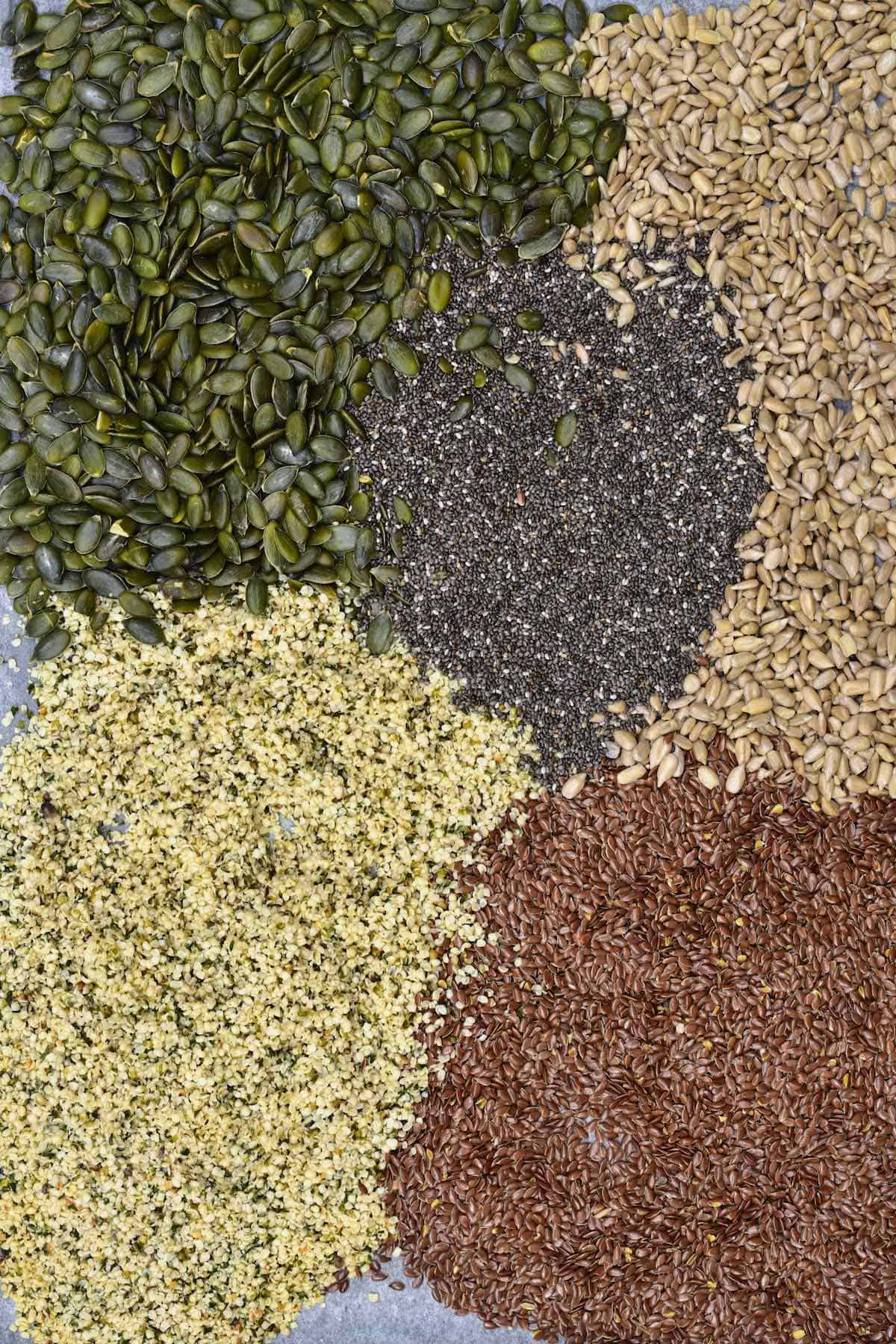
Omega-3s
Omega-3 fatty acids can’t be produced by our bodies and are polyunsaturated fats that come in several varieties, including Eicosapentaenoic Acid (EPA – and yes, I struggle to pronounce that too!), Docosahexaenoic acid (DHA), and Alpha-linolenic acid (ALA). Though the latter is converted into the former (though not particularly well).
Combined, the omega-3s can affect bodily health in several ways, including:
- Fighting inflammation
- Improving heart health
- Decreasing liver fat
- Supporting mental health
- Fighting age-related mental decline
DHA is the most important of the three, affecting brain, eye, and other body-parts health.
Omega-3 Foods
We classically think of oily fish as being the primary source of Omega-3s. However, there are a few plant-based options, too.
- Oily fish: salmon, mackerel, sardines, and anchovies all contain levels of EPA and DHA. Microalgae also contain EPA.
- Nuts/Seeds: chia seeds, flaxseeds, hemp seeds, and walnuts all contain levels of ALA, which can be converted to EPA and DHA. Unfortunately, only a tiny amount is converted.
Omega-6s
Like omega-3s, omega-6s are an essential fatty acid and polyunsaturated, and they provide energy for the body. The most common omega-6 is linoleic acid, which is converted to arachidonic acid (AA) in our bodies, which is a type of pro-inflammatory eicosanoid.
While these play an essential role in our immune system, too many may increase inflammation in our bodies, though more research is needed on this.
Omega-6 fatty acid benefits also include:
- Improving heart health
- Improving cell health
Omega-6 Foods
Refined vegetable oils contain very high levels of omega-6 fats. Unfortunately, in the Western diet, we consume far too much omega-6 compared to omega-3s. Especially as so many processed foods are made with vegetable oils.
Sources include
- Nuts: Sunflower seeds, cashew nuts, almonds, and walnuts all contain high levels of omega-6s
- Oils: soybean oil, vegetable oils, safflower oil, and mayonnaise
- Soy: soybeans and tofu.
What is the optimal omega ratio?
According to studies, the best omega-6 to omega-3 ratio is somewhere between 1:1 to 4:1. However, those who consume a ‘typical Western diet’ may consume them in a ratio somewhere around 15-17:1!
Why care about this?
Because inflammation is the leading cause of most serious chronic diseases, including heart disease, Alzheimer’s, arthritis, diabetes, many cancers, etc.
More research is needed on whether high intake omega-6s can impact the risk of chronic diseases. In fact, the effect of overconsuming omega-6s may be minimal, with the main issue is eating a diet not consuming enough omega-3s. This is why trying to balance them better is important.
Omega-9s
The less-discussed of the three, omega-9 fatty acids are monounsaturated fats – oleic acid being the most common. While these fatty acids technically aren’t an ‘essential’ fatty acid, as our bodies can produce them, eating foods rich in omega-9s can be beneficial over other fat types.
Some initial studies have shown that they may have anti-inflammatory properties and improve insulin sensitivity.
So, what does this mean?
Basically, most of us are eating far too many omega-9s and not enough omega-3s and need to reduce the ratio to between 1-4:1 omega-6s:omega-3s by increasing our omega-3 intake.
This becomes tricky when eating a predominantly plant-based diet – as the leading high sources of omega-3s come in the form of fish. However, as far as I’m aware (don’t quote me on this), this is because of what the fish eat (algae). This is why there are several vegan algae oil supplements.
While it’s possible to take those omega-3 supplements, I like to do what I can naturally through diet, when possible – which is where this omega seed butter recipe comes in.
The Omega Seed Butter Ingredients
If you want to read more of the ingredients’ health benefits, click the links. This will take you to my recipes for their individual seed butter, where I usually list/discuss their various health benefits.
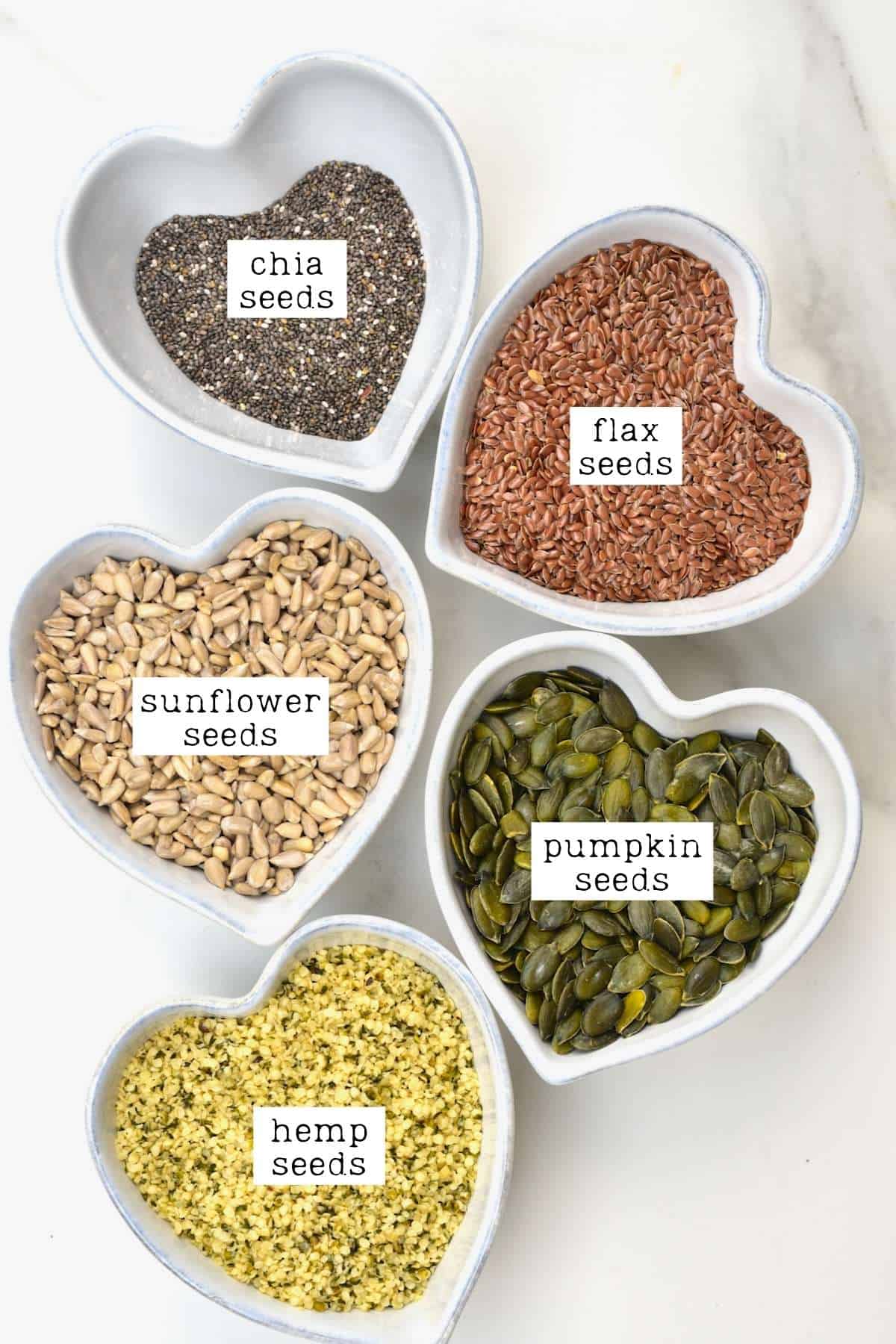
- Hemp Seeds: make sure to use shelled hemp seeds. These seeds contain a 3:1 ratio of omega-6 to omega-3 (the optimal range) and 3g protein per tablespoon and are high-quality complete source of protein; meaning it contains all the amino acids our bodies need.
- Chia Seeds: there’s a reason why chia pudding is eaten for more than just its flavor. These tiny seeds are packed with 2g protein per tablespoon with a 1:3 ratio of omega-6 to omega-3s (with 2000mg omega-3 per tablespoon!). More so, they’re also packed with antioxidants and fiber.
- Flax Seeds: also referred to as linseed. There is golden and brown linseed available though brown has a slightly higher omega-3 content and contains more antioxidants. Meanwhile, golden linseed has more elevated amounts of two healthy essential fats our bodies can’t produce, ALA and linoleic acid. Both varieties are packed with vitamins, minerals, and fiber, though – so either will work in this omega seed butter. According to the USDA (And Google), 1 tablespoon of whole flax contains 1.9g protein and a 1:4 omega-6:Omega-3 ratio.
- Sunflower Seeds: these seeds are a great ZERO cholesterol option and have moderate amounts of several vitamins and minerals, including potassium, iron, zinc, magnesium, Vitamin A, B, and E. Plus, they contain around 2g protein per tablespoon and large amounts of monounsaturated and omega-6 fats.
- Pumpkin seeds: These tasty seeds are a rich source of several minerals and phytosterols (good for lowering blood cholesterol) and contain around 1g of protein per tablespoon. They are also a strong source of omega 6, with a ratio of 110:1 (estimated) Omega-6: Omega-3.
Optional
- If you don’t have a high-speed blender, you may also need a little oil to help the machine blend. If you want to use an oil high in omega-3s, canola oil, flaxseed oil, and walnut oil would work.
- A pinch of salt would also help to improve the flavor of the seed butter.
How to Make Omega Seed Butter
Step 1: Toast the seeds
Toasting the seeds will help them release their natural oils for better flavor and easier blending – without degrading their nutritional value.
Spread the seeds on a parchment-lined baking tray and toast in the oven for just 5 minutes at 325ºF/160ºC.
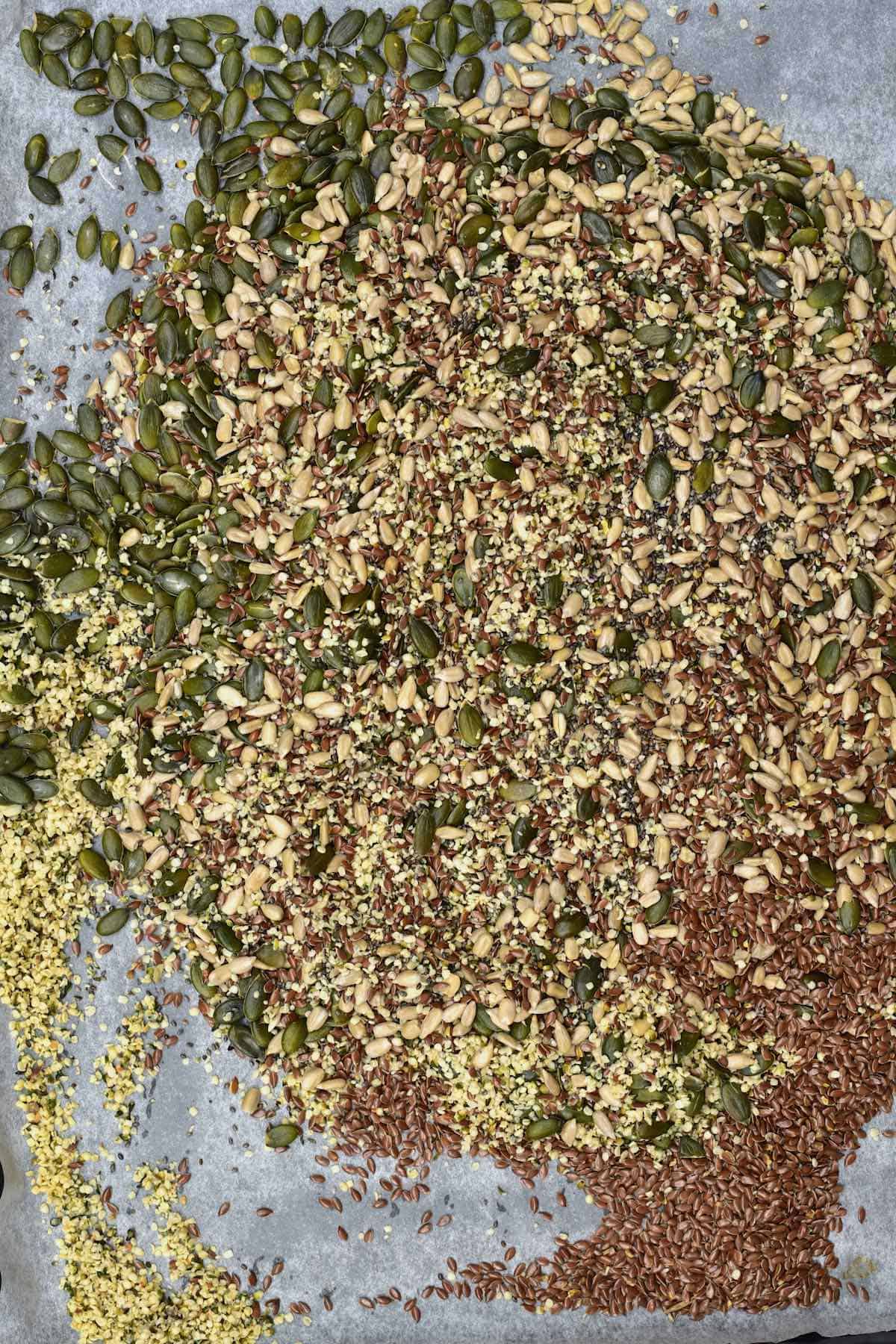
Step 2: Blend the seed butter
Allow them to cool slightly before transferring to your high-speed food processor or blender.
Blend/process the nuts until they achieve a smooth butter. It can take a while to blend to the correct consistency, so give your machine a break every couple of minutes. Scrape down the sides of the jug, if needed.
When it’s ready, transfer it to a clean, airtight container (like a glass jar).
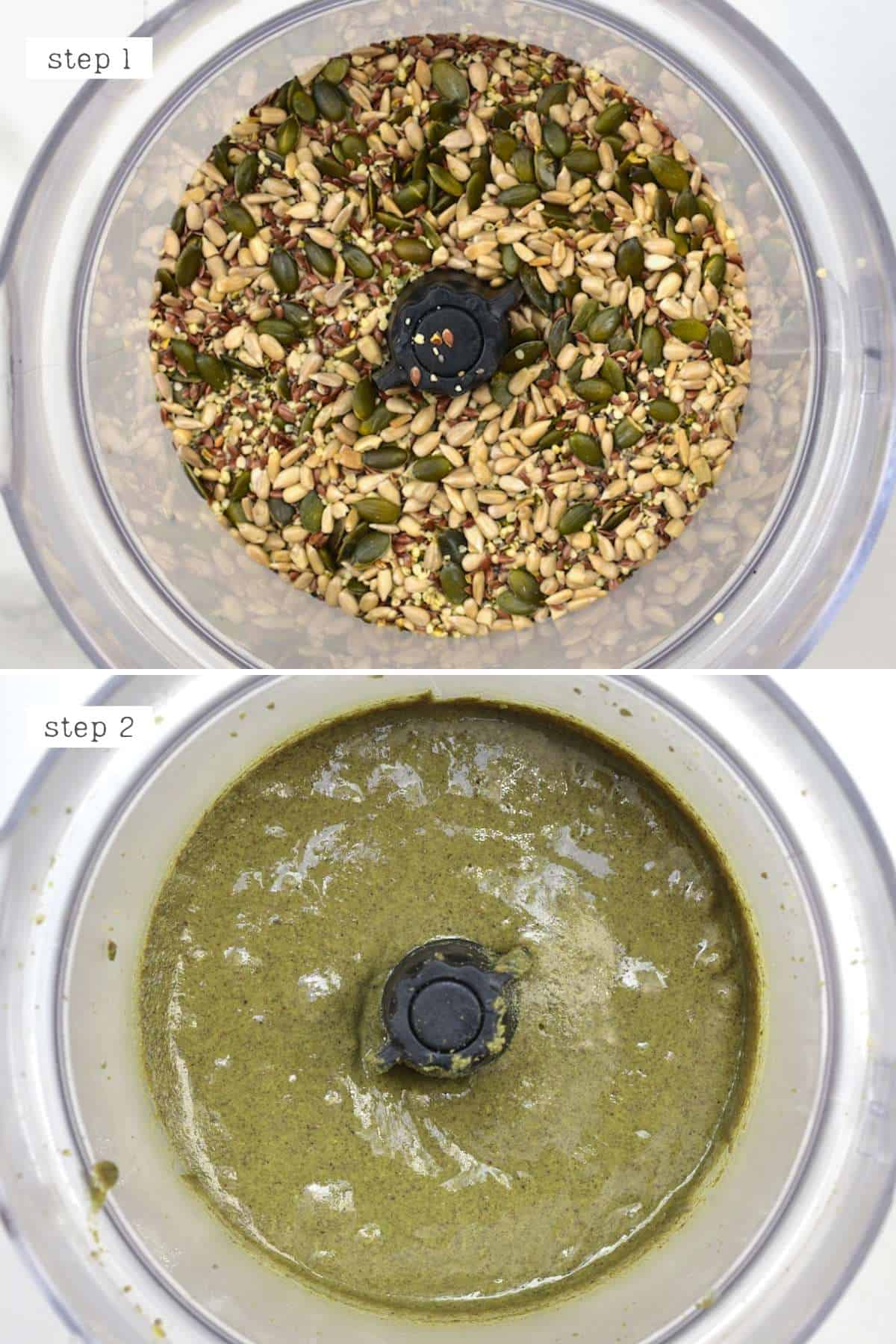
How to Store
You can store the omega seed butter at room temperature, in the fridge, or frozen.
- Room temp: Keep the omega spread in a cool cupboard for around 2 weeks.
- Fridge: Store in the refrigerator for up to two months. It will harden in the fridge but can be brought back to room temperature or microwaved for a few seconds to get it back to consistency.
- Freezer: Store in a freezer-safe container for up to 6 months. I recommend portioning the seed butter into an ice-cube tray in 1-2 Tbsp portions. Once frozen, add the nut butter cubes to a bag. Remove them as needed.
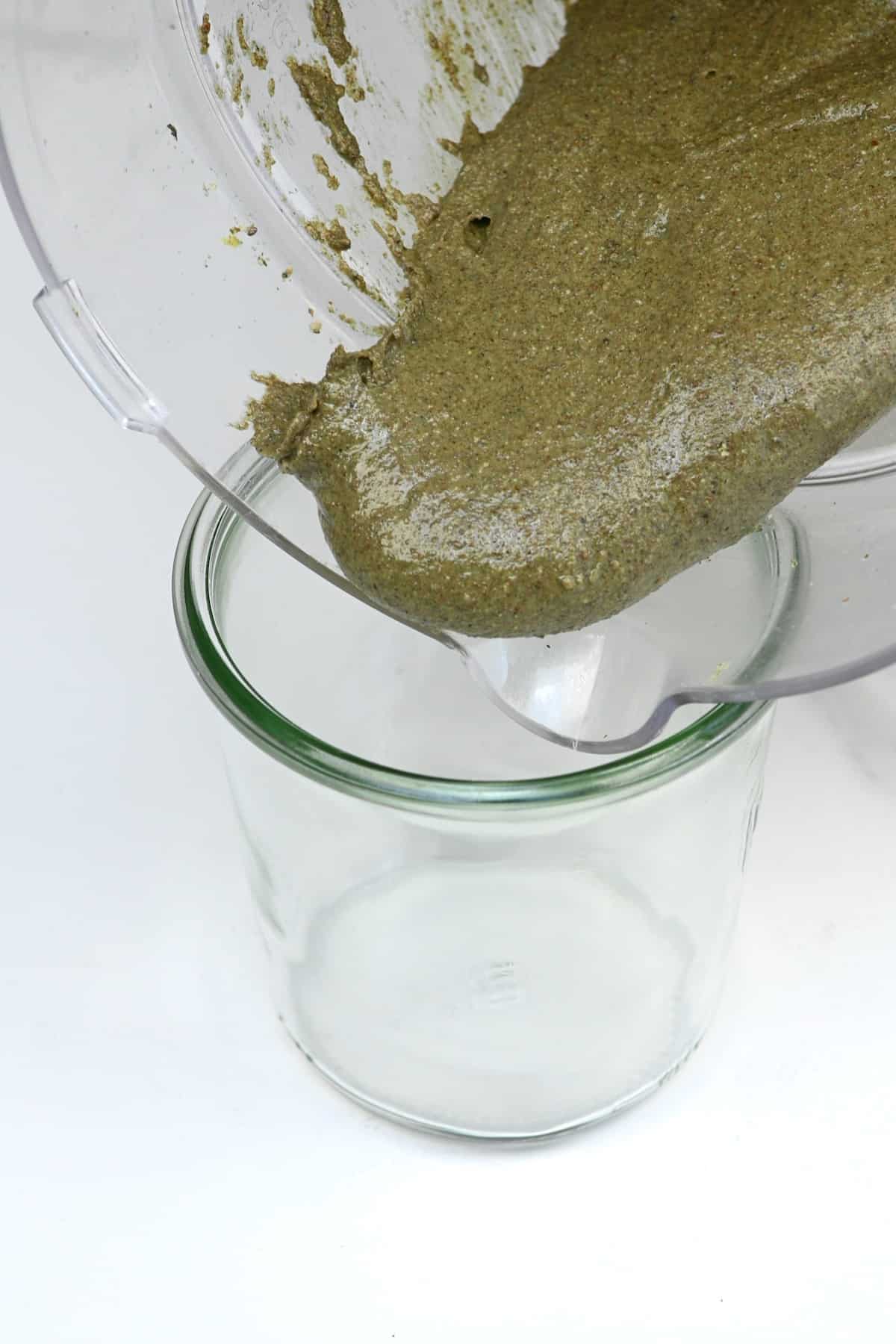
How to Use
You can enjoy this omega spread in most of the same ways you would use any other nut/seed butter.
- Spread over toast, bagels, or crackers.
- Spread over fruit – like apple slices.
- Add a spoonful or two to smoothies.
- Mixed into oatmeal and overnight oats.
- Enjoyed with a yogurt bowl (Greek yogurt, coconut yogurt, almond yogurt) or parfait.
- Added to salad dressings.
- Mixed into baked goodies like brownies and cakes.
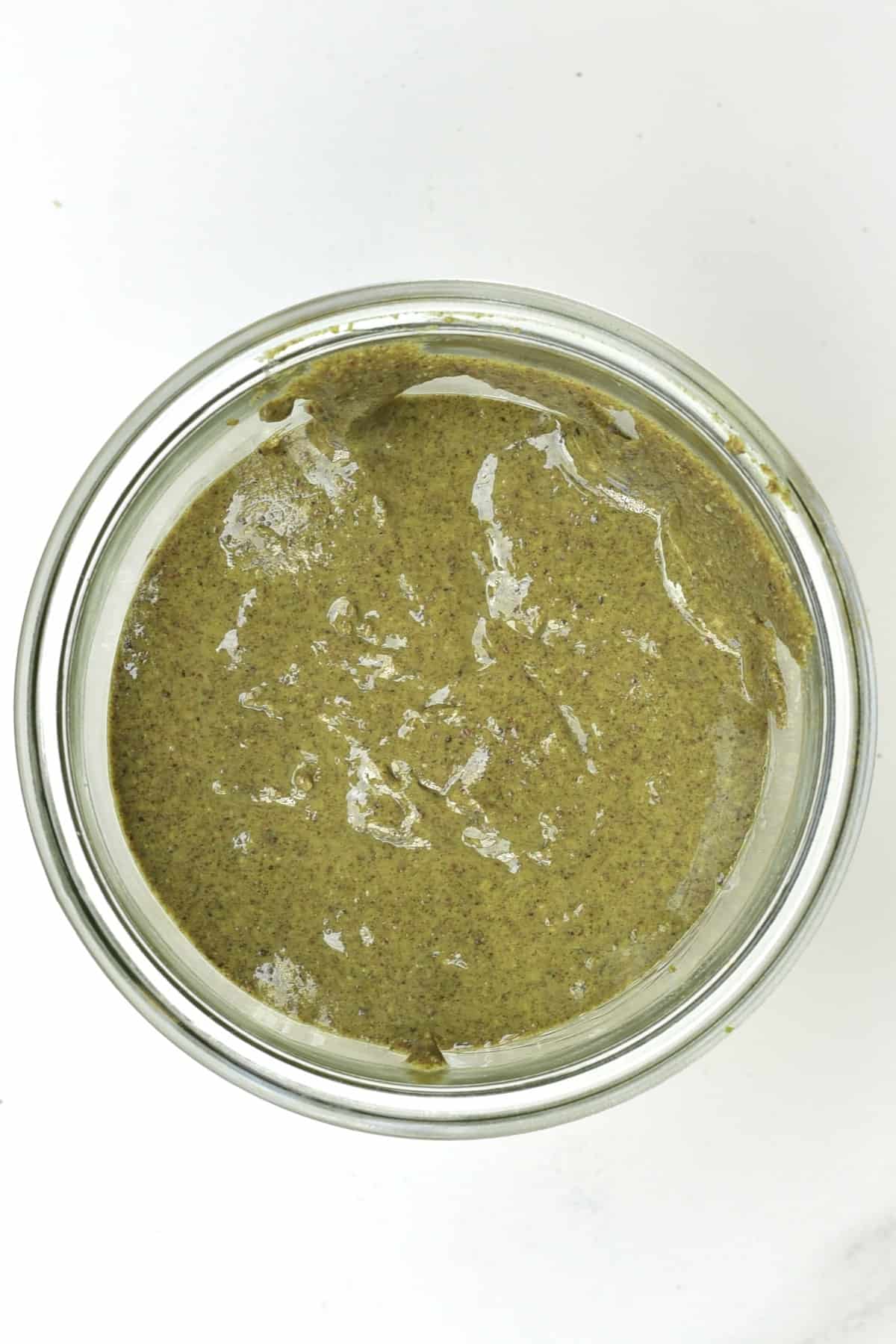
Recipe Notes
- The seed ratio: Feel free to adapt the seeds’ ratio slightly based on your favorite flavors and the nutritional values. To eliminate the high omega-6 values, then reduce the sunflower and pumpkin seeds.
- To sweeten the seed butter: It’s best to slowly mix the liquid sweetener of your choice into the omega spread after it’s blended.
Related Recipes
If you try this omega seed butter recipe, I‘d love to hear your thoughts/questions below. Also, I‘d really appreciate a recipe card rating below, and feel free to tag me in your recipe recreations on Instagram @Alphafoodie!
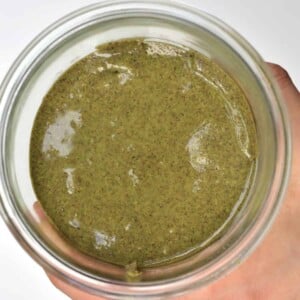
Omega seed butter
Equipment
Ingredients
- ¼ cup chia seeds
- 1 cup flax seeds
- 1 cup sunflower seeds
- 1 cup pumpkin seeds
- 1 cup hemp hearts
- neutral oil Optional – if you have a low-speed blender (check notes)
- Salt just a pinch, Optional
Instructions
Step 1: Toast the seeds
- Toasting the seeds will help them release their natural oils for better flavor and easier blending – without degrading their nutritional value.
- Spread the seeds on a parchment-lined baking tray and toast in the oven for just 5 minutes at 325ºF/160ºC.
Step 2: Blend the seed butter
- Allow them to cool slightly before transferring to your high-speed food processor or blender.
- Blend/process the nuts until they achieve a smooth butter. It can take a while to blend to the correct consistency, so give your machine a break every couple of minutes. Scrape down the sides of the jug, if needed.
- When it’s ready, transfer it to a clean, airtight container (like a glass jar).
Notes
- The seed ratio: Feel free to adapt the seeds’ ratio slightly based on your favorite flavors and the nutritional values. To eliminate the high omega-6 values, then reduce the sunflower and pumpkin seeds.
- To sweeten the seed butter: It’s best to slowly mix the liquid sweetener of your choice into the omega spread after it’s blended.
- If you don’t have a high-speed blender, you may also need a little oil to help the machine blend. If you want to use an oil high in omega-3s; canola oil, flaxseed oil, and walnut oil would work. A pinch of salt would also help to improve the flavor of the seed butter.
Nutrition
Nutrition information is automatically calculated, so should only be used as an approximation.

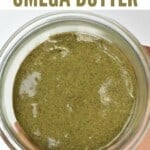
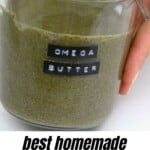
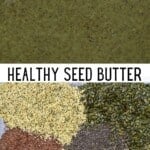
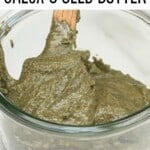
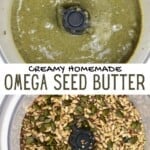
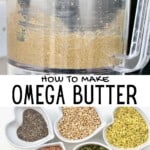
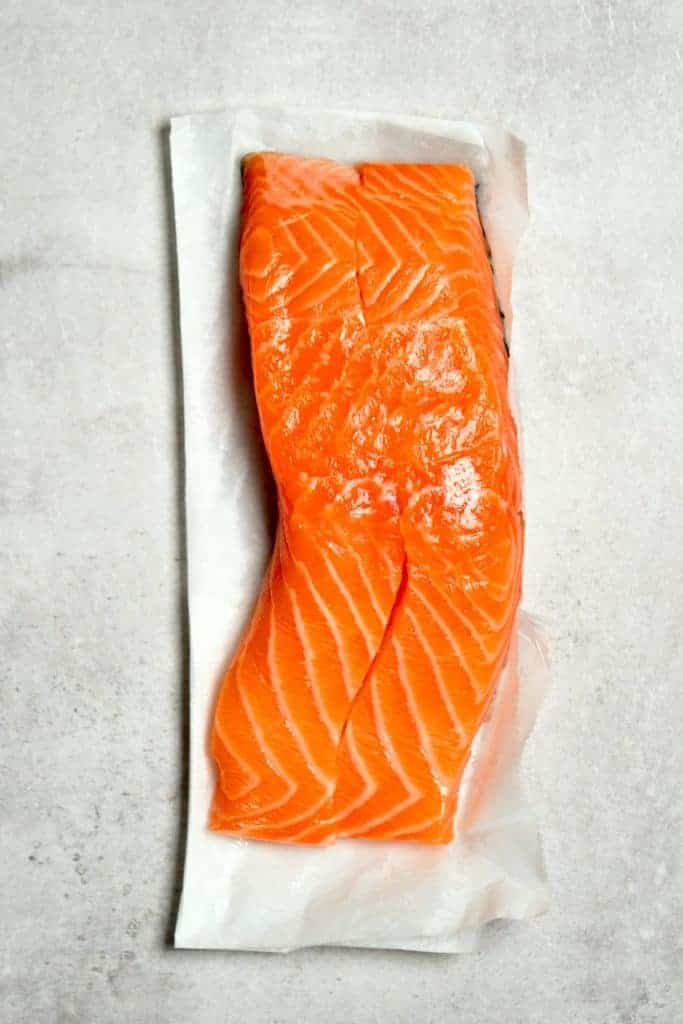
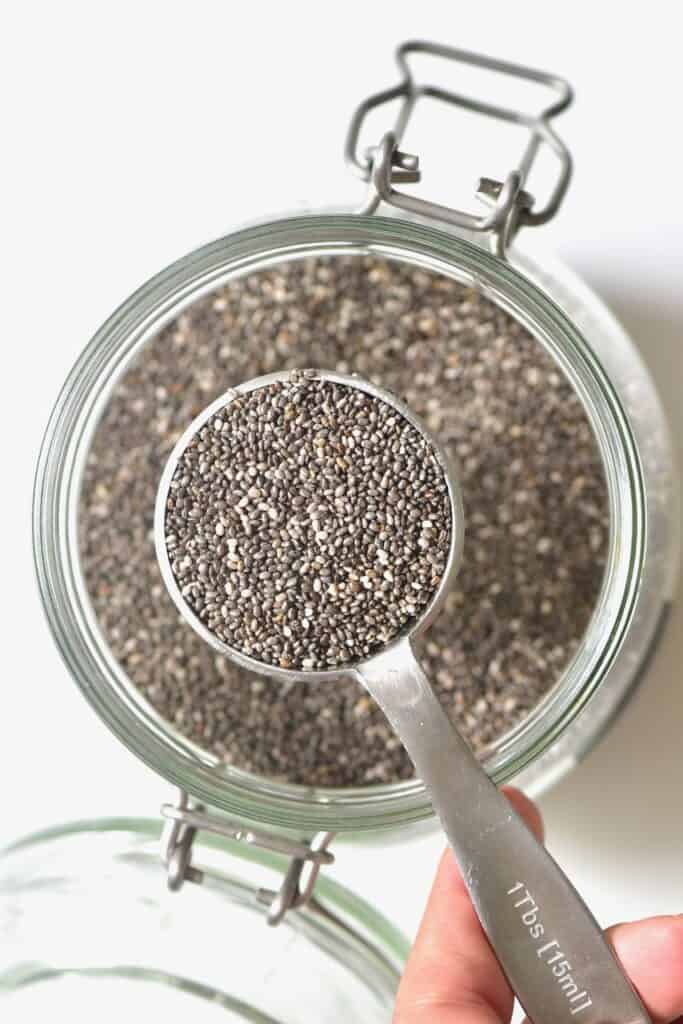
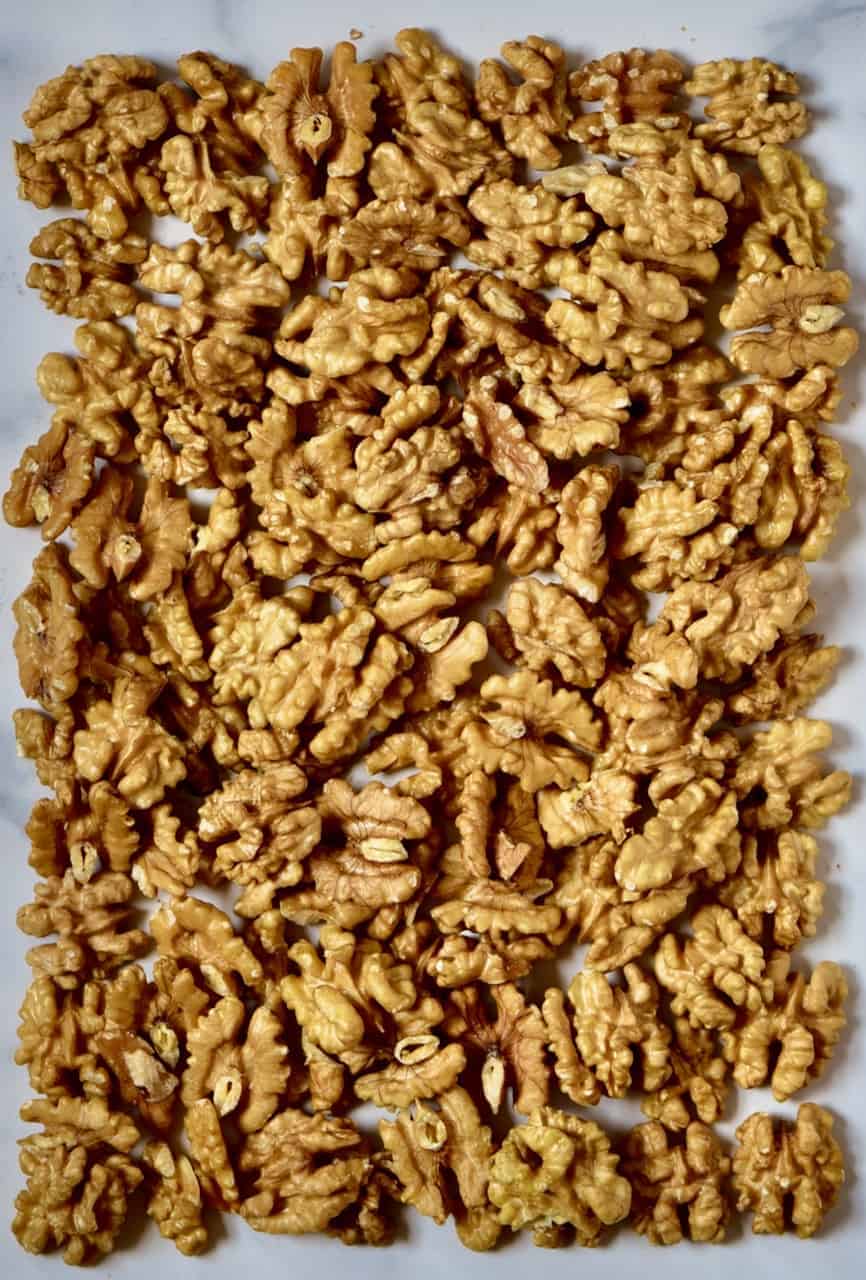
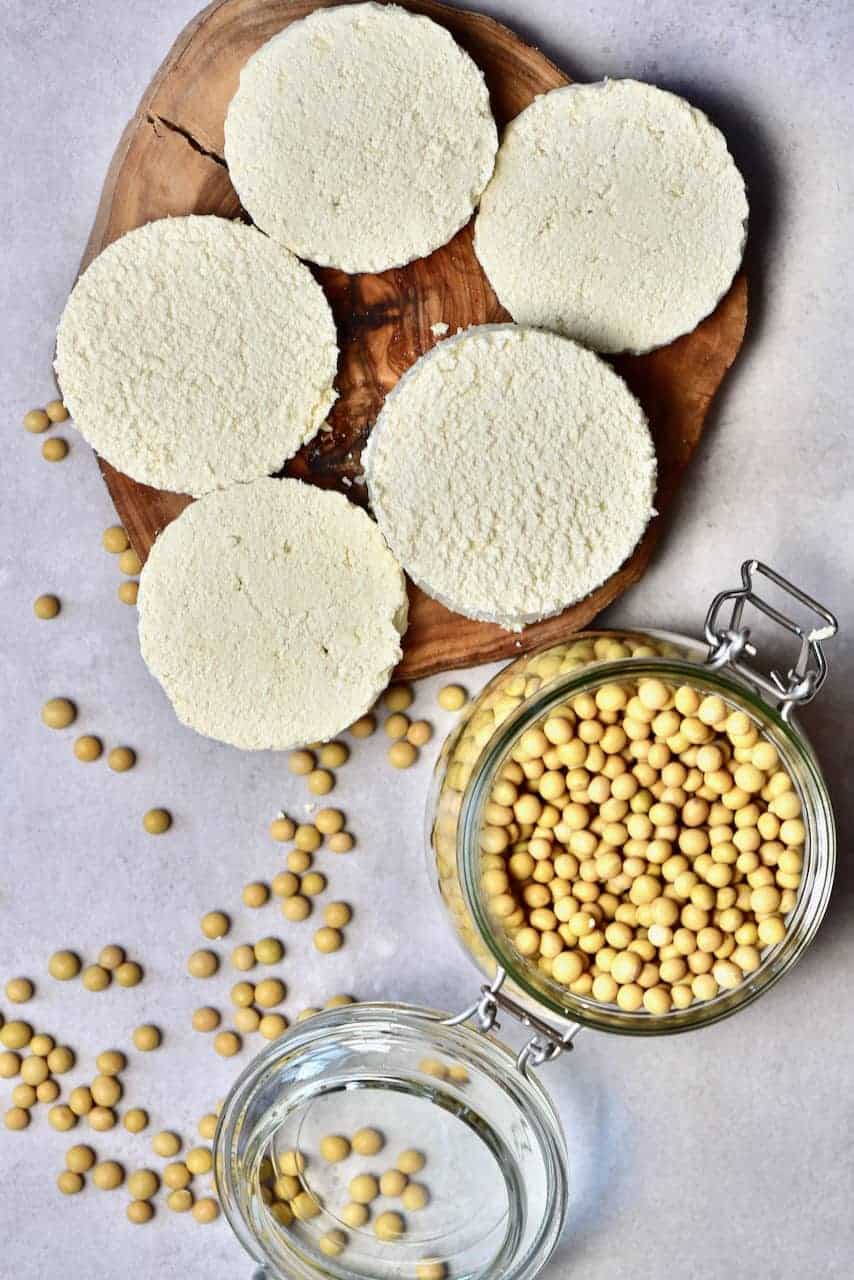
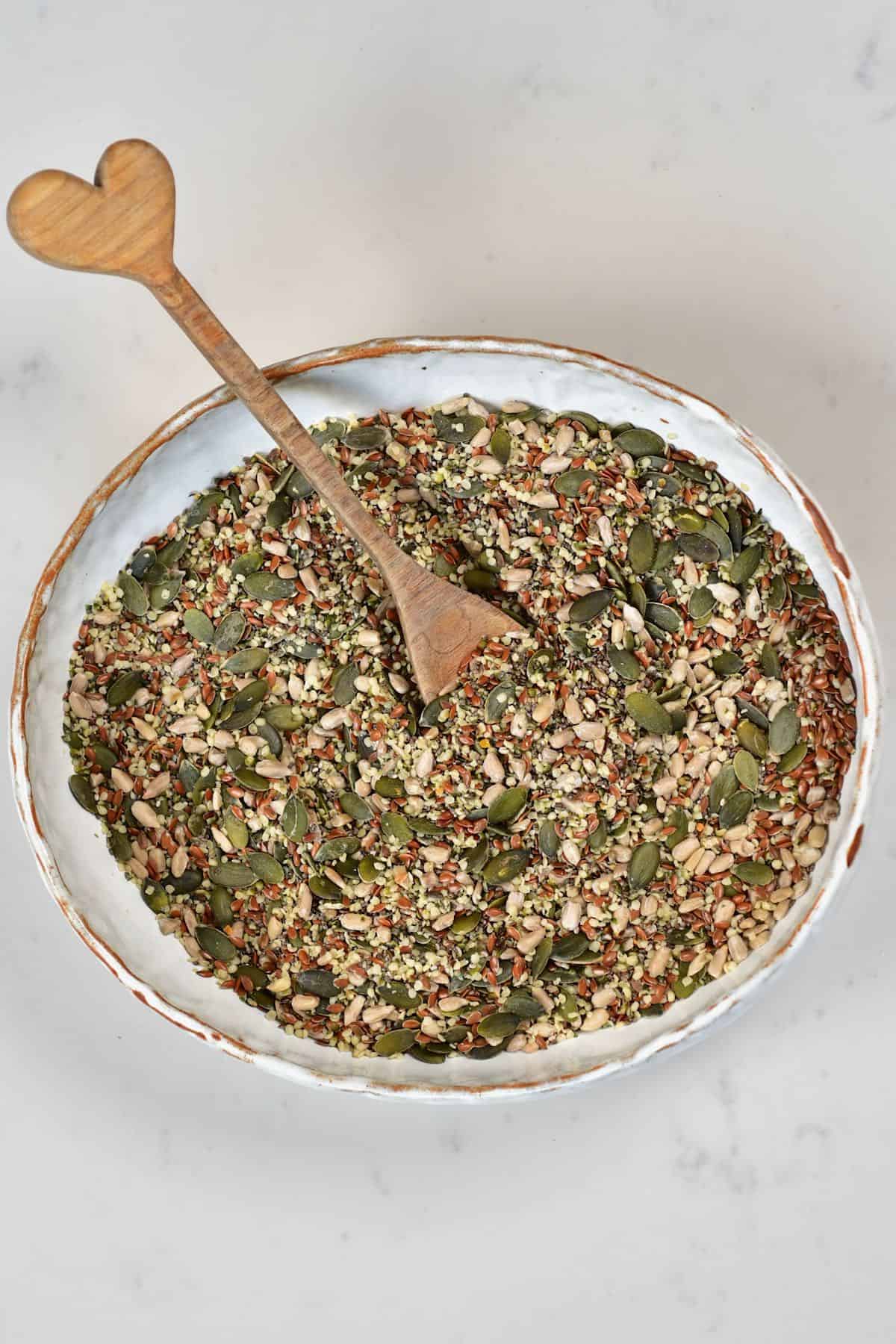
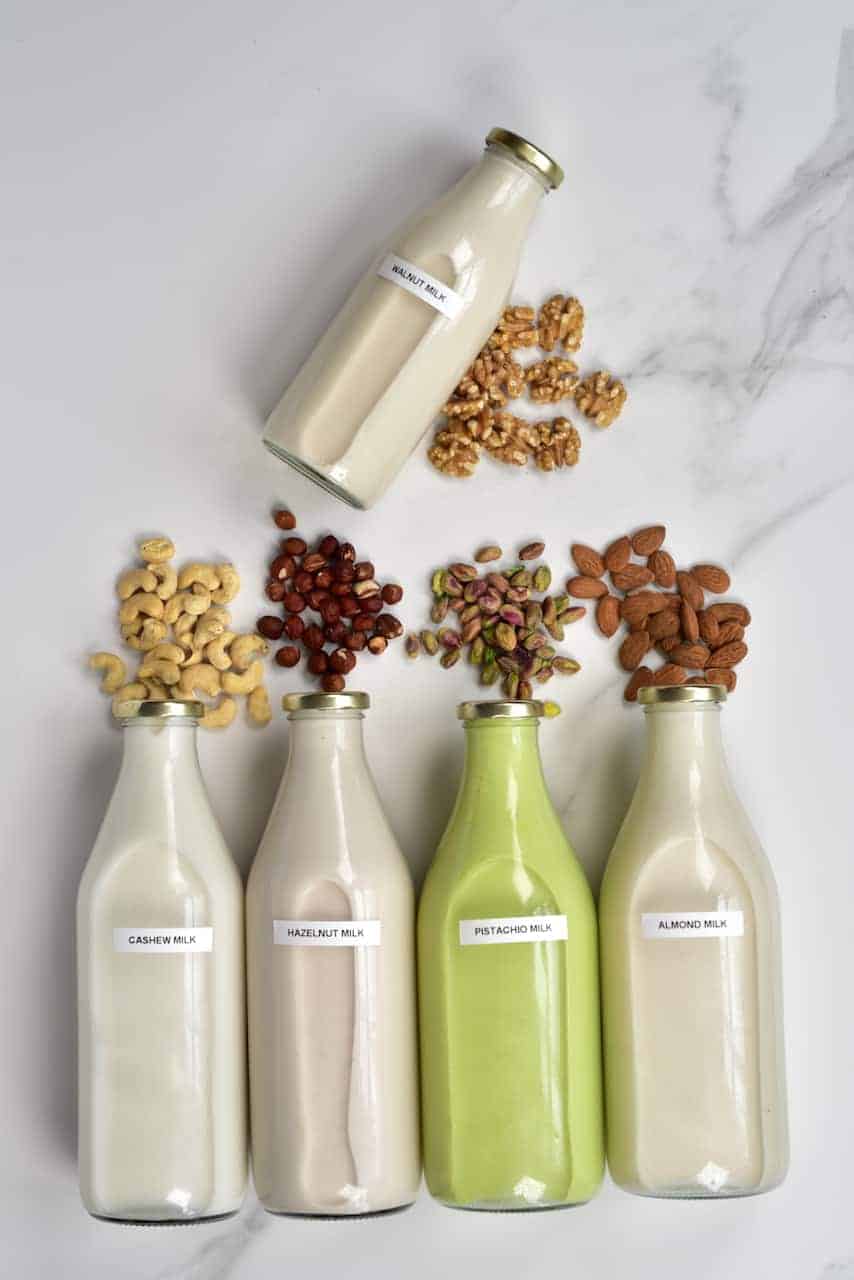
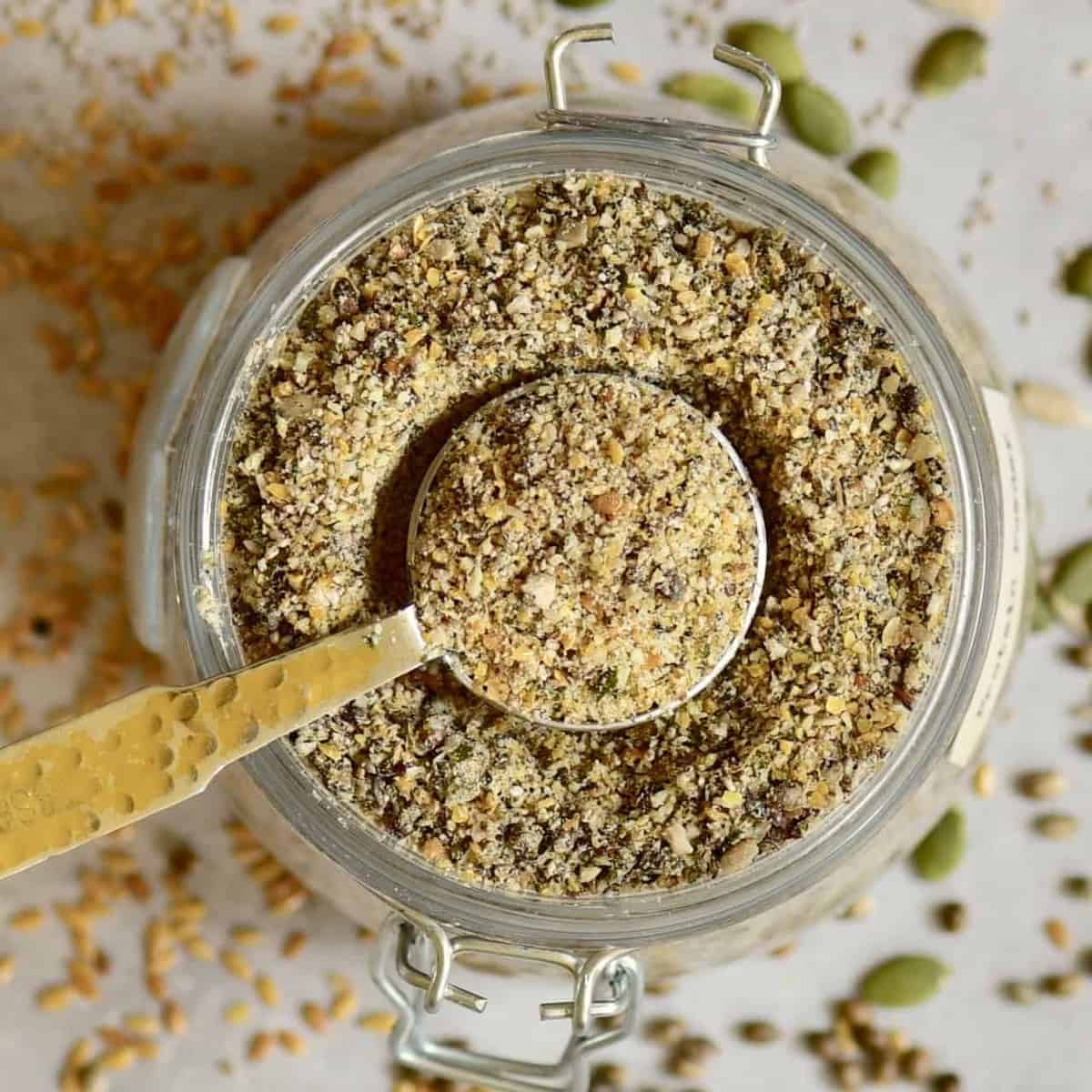









Hey Samira,
I tried your recipe for 5 seeds super omega butter and it’s amazing. I am lactose intolerant and was looking for a substitute for butter when I found your recipe. Since I was looking for a higher protein content, I doubled the sunflower seeds then suggested and half of the suggested chia seeds.
I had to use cold pressed coconut oil to make a smooth butter as I used a mixer.
The end result was a smooth and tasty butter. Thank you for posting your amazing recipe.
Hi Ashutosh,
So happy you liked the omega butter. It’s great you adjusted the ingredients to what you wanted – it sounds amazing! 🙂
Hello, I just wanted to ask can I add melon seeds to the mix as well.
Hi Audrey,
Yes, you can add melon seeds too. Toast them together with the other seeds. I hope this helps.